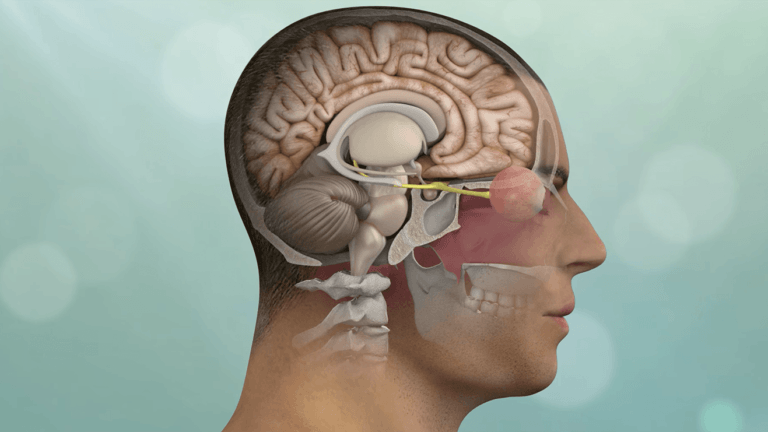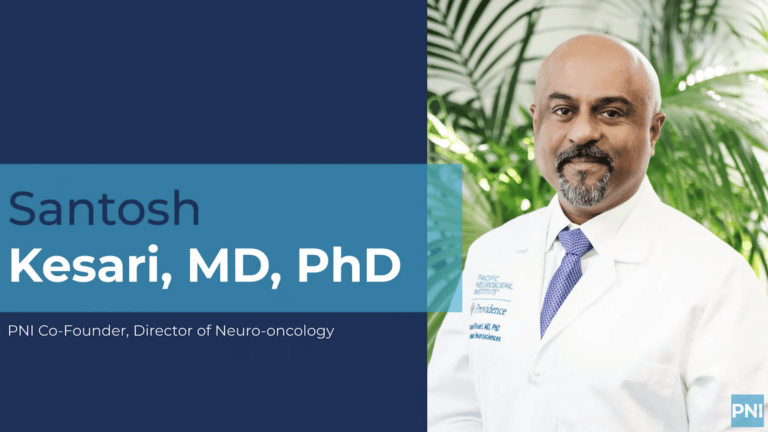
Glioma & Glioblastoma
What is a Glioma?
A glioma is a type of tumor that originates in the glial cells, which are cells that provide support and protection for nerve cells in the brain and spinal cord. Gliomas are the most common type of primary brain tumor, accounting for approximately 30% of all brain tumors.
Gliomas are classified based on the type of glial cells they arise from and the degree of malignancy. There are three main types of glial cells: astrocytes, oligodendrocytes, and ependymal cells. Astrocytomas, which arise from astrocytes, are the most common type of glioma. Oligodendrogliomas, which arise from oligodendrocytes, are less common but tend to be more responsive to treatment. Ependymomas, which arise from ependymal cells, are rare and often occur in the lining of the ventricles in the brain.
The degree of malignancy of a glioma is based on its histological features and is classified as low-grade or high-grade. Low-grade gliomas are slow-growing and typically have a better prognosis, while high-grade gliomas are fast-growing and more aggressive, often requiring more intensive treatment.
What is Glioblastoma?
Glioblastoma, also known as glioblastoma multiforme, is a highly malignant type of brain tumor that arises from the glial cells in the brain. It is the most aggressive and deadly form of glioma, accounting for approximately 50% of all gliomas and 15% of all primary brain tumors.
Glioblastoma is classified as a grade IV tumor, indicating that it is highly malignant and grows very rapidly. It typically affects adults between the ages of 45 and 70, and is more common in men than women.
The cause of glioblastoma is not fully understood, but there are several risk factors that have been identified, including genetic mutations, exposure to ionizing radiation, and a history of certain neurological disorders.
Personalized patient-specific care with tumor profiling is now possible for most Gliomas
Gliomas — including Glioblastoma multiforme (GBM), anapastic astrocytoma and oligodendroglioma — are best treated with a team approach. This typically includes minimally invasive surgery, targeted medical therapies & radiotherapy.
The initial optimal treatment for most gliomas is maximal surgical removal. For patients with higher grade gliomas, surgery is followed by radiation therapy and chemotherapy. Fortunately, most gliomas can be surgically removed through one of several keyhole routes depending upon tumor location and size.
What is the Difference Between Gliomas and Glioblastoma?
Glioma and glioblastoma are both types of brain tumors that arise from the glial cells in the brain. However, there are several differences between these two types of tumors.
Gliomas are a broad category of brain tumors that can be classified into different types based on the specific type of glial cell that they arise from. These include astrocytomas, oligodendrogliomas, and ependymomas. Gliomas are classified by grades I-IV, with grade IV being the most malignant and aggressive.
Glioblastoma, on the other hand, is a specific type of glioma and is classified as a grade IV tumor. Glioblastoma is the most aggressive and malignant form of glioma, and it grows rapidly and spreads quickly to nearby tissues. Glioblastomas are often referred to as glioblastoma multiforme because they contain multiple types of cells.
Another difference between glioma and glioblastoma is their prognosis. While both types of tumors can be difficult to treat, glioblastoma is typically more aggressive and has a worse prognosis than other types of glioma. Glioblastoma also tends to recur more frequently and quickly than other gliomas.
About Gliomas
A glioma is a brain tumor made up of astrocytes, which are glial cells that support the neurons of the brain. Gliomas are the most common type of primary brain tumors originating from brain tissue.
There are approximately 12,000 new cases of glioma every year. Even the most aggressive gliomas almost never spread throughout the blood and lymphatic systems into other parts of the body, and in this sense they differ from cancers in that they typically remain confined to the central nervous system.
3 major types of gliomas:
- Astrocytomas are defined by their histological grade from low grade to high grade. The most common type of glioma is the high grade glioblastoma multiforme (GBM) which is rapidly growing and generally carries a poorer prognosis. Lower-grade astrocytomas (grades 1 and 2 and pilocytic astrocytomas) are generally slow-growing and carry a better prognosis.
- Ependymomas
- Oligodendrogliomas
Glioma Grading
Among gliomas, there is a spectrum of how malignant or aggressive a tumor can be. The World Health Organization (WHO) grades gliomas from I-IV, with IV being the most aggressive and infiltrative glioma called glioblastoma multiforme (GBM).
WHO Grade III gliomas are also known as anaplastic glioma (also called anaplastic astrocytomas, AA).
WHO Grade II gliomas are also known as low grade, or diffuse glioma.
WHO Grade I tumors comprise a separate entity, consisting of various (often benign) tumors usually seen in pediatric populations. The most common of these are pilocytic gliomas, which usually have a very good prognosis following complete surgical removal. Although they do not metastasize like malignant cancers, gliomas are not “benign” because they may infiltrate or invade the brain tissue, even beyond the areas they are visualized on imaging studies such as MRI.
Cells from the tumor may spread into and mix themselves among normal brain cells. With the naked eye, or even under an operating microscope, it is often not possible to differentiate normal from infiltrated brain. It is only with the neuropathologists high-power microscope magnifying 25 to 40 times that abnormal tumor cells can be seen as they mix in with normal brain tissue.
High-grade glioma
At the current time, it is not possible to obtain a cure of an infiltrative or high-grade glioma (Grade III or IV). This implies that other treatment approaches, such as chemotherapy and radiation, are needed to control these tumor types. In addition, numerous experimental clinical trials are available at Pacific Neuroscience Institute (PNI) for patients with newly diagnosed and recurrent gliomas.
What causes gliomas?
The cause of a glioma is unknown. Although the initial cause is thought to be related to mutations in the DNA of the tumor cells, there are currently no clear-cut environmental or behavioral risk factors (such as air pollution or smoking) that are known to cause gliomas.
Symptoms
Glioma brain tumor symptoms are variable and depend on tumor location and size.
The first symptom of a brain tumor of any type can be a headache. The reason that patients get headaches with brain tumors is that these masses cause increased pressure in the brain. The headache associated with a brain tumor is frequently worse in the morning and may be associated with nausea or vomiting.
Other common signs and symptoms of a gliomas include:
- Headache
- Seizures
- Confusion
- Weakness
- Numbness of a side or part of the body
- Imbalance
- In-coordination
- Memory impairment
- Changes in mood
- blurred, double or loss of vision
Diagnosis
What do I do if I have these symptoms?
If a patient has any of the symptoms mentioned above with no other obvious explanation a diagnostic work-up should be done.
Glioma, like other brain tumors, is currently best seen on magnetic resonance imaging (MRI) studies of the brain. Computerized tomography (CT) is also a good technique for seeing structures in the head and brain but does not show quite as much detail, as does MRI.
The problem with MRI is that while it is a good technique for detecting a brain mass, it does not identify the type of mass. A glioma can look like other kinds of brain tumor, or even like an infection. A resection is needed to confirm the diagnosis of glioma and to grade the tumor, in order to guide the next steps of appropriate treatment and provide a prognosis for survival time.
The microscopic structure of a glioma is extremely important in making decisions about treatment and in predicting survival. Based on features of cells within tumors, neuropathologists can often predict how aggressively a tumor will behave, and assign a WHO grade, which ultimately contributes to how long a patient will survive and what quality of life they may have.
Treatments
The treatment of a glioma depends tremendously on the tumor WHO grade and subtype, as well as size and location of the tumor. Through many decades of research, we have learned that for most gliomas, the amount of tumor removed may correlate with survival time. At the same time, for higher grade (WHO Grade III and IV) gliomas including glioblastoma multiforme, although all visible portions of the tumor may be removed with surgery, the tumor has often already infiltrated the surrounding brain far beyond the margins of the visible tumor, making a surgical cure impossible.
Because gliomas are infiltrative into the brain and blend into the adjacent normal brain, they typically cannot be removed completely.
Glioma Brain Tumor Surgery
Treatment for gliomas can be surgical or non-surgical. One of the key principles we focus on is maximal tumor removal with preservation of quality of life and neurological function. Typically through a keyhole craniotomy approach followed by radiotherapy and chemotherapy. In many instances, all 3 of these treatments are needed. To maintain this standard, we offer the most advanced, state-of-the-art, surgical techniques for glioma removal, including:
- Neurophysiological monitoring
- Standard Motor Mapping
- Advanced neuro-imaging (functional MRI, MR perfusion, tractography, spectroscopy)
- Awake speech and motor mapping
- Neuro-navigation technology
Radiation Therapy for Gliomas
Radiation therapy is an effective treatment option for most gliomas. Radiation can be administered to the whole brain, or it can be relatively focused to a selected region of the brain via a technology called radiosurgery.
PNI offers the benefits of several types of radiation therapy, both of which allow very precise focusing of radiation beams into the area of glioma with minimized damage to surrounding brain.
Chemotherapy for Gliomas
Chemotherapy is another option for treatment of gliomas. The current standard of therapy for newly-diagnosed high grade gliomas (WHO Grade III or IV) typically include 6 weeks of chemotherapy using a drug called temozolamide, in conjunction with radiation therapy followed by additional chemotherapy cycles.
Many patients will have the option of enrolling in a major clinical trial, typically investigating an experimental intervention for treating these tumors. Clinical trials for glioblastoma are essential to fighting this disease. Personalized therapy options based on molecular and genetic profiling of the tumor also allow PNI to determine treatments that are individualized for each patient.
Glioma and GMB Clinical Trials
Genomic sequencing of gliomas offers many new treatment options for our patients allowing for personalized treatments and clinical trial options based on the specific tumor markers on each patient.
In addition, PNI is currently carrying out numerous research projects to investigate many aspects of gliomas and various treatments. Many patients that have surgery at PNI opt to have their brain tumors freshly frozen and stored so that future genetic or molecular studies can be done to analyze them or even potentially customize a tailored treatment option for patients, should a new therapy become available.
Doctors and Specialists Who Treat Gliomas and Glioblastomas
At the Pacific Brain Tumor Center, located in Santa Monica, CA, we incorporate leading-edge technology such as MRI fiber tractography, functional MRI , surgical navigation and awake craniotomy protocols, with proven surgical experience, to make glioma surgery safer, less invasive and more effective.
We have a large experience in the comprehensive personalized care of all types of gliomas including low-grade astrocytomas, oligodendrogliomas, anaplastic astrocytomas and glioblastomas.
Our neurosurgeons Dr. Daniel Kelly, Dr. Garni Barkhoudarian and Dr. Walavan Sivakumar work closely with our neuro-oncologists, Dr. Santosh Kesari, Dr. Jose Carrillo, and Dr. Naveed Wagle as well as our radiation oncologists and neuropathologists to design the optimal treatment plan that incorporates the latest in radiotherapy techniques and tumor biomarker studies. By using comprehensive tumor histological subtyping and genomic sequencing, we are able to provide a personalized therapeutic approach for each patient. Our team can also facilitate participation in clinical trials using novel medical therapies for patients with gliomas.
At the Pacific Brain Tumor Center, our doctors and specialist have years of experience treating gliomas and other brain tumors that are complex in their diagnosis and treatment and warrant a team approach of experienced specialists to achieve optimal outcomes. From diagnosis to treatment, as well as education and support, we are here for you.
Glioblastoma Patient Stories
Videos
 Keyhole Brain Tumor and Skull Base Surgery
Keyhole Brain Tumor and Skull Base Surgery
 Our Brain Tumor Center
Our Brain Tumor Center
 Clinical Trials at PNI
Clinical Trials at PNI
 Meet Dr. Daniel F. Kelly
Meet Dr. Daniel F. Kelly
 Meet Dr. Garni Barkhoudarian
Dr. Barkhoudarian is the Co-Director Pituitary Disorders Center, Neurosurgery; Director, Adult Hydrocephalus Center; Director, Facial Pain Center; Chief, Radiosurgery Program; Director, JWCI / PNI Microdissection Anatomy Laboratory. He is a…
Meet Dr. Garni Barkhoudarian
Dr. Barkhoudarian is the Co-Director Pituitary Disorders Center, Neurosurgery; Director, Adult Hydrocephalus Center; Director, Facial Pain Center; Chief, Radiosurgery Program; Director, JWCI / PNI Microdissection Anatomy Laboratory. He is a…
 Meet Dr. Walavan Sivakumar
Dr. Walavan Sivakumar is a fellowship-trained neurosurgeon with a focus on skull base and minimally invasive and endoscopic neursosurgery. Selected as a multiple year recipient of the SuperDoctor Rising Stars…
Meet Dr. Walavan Sivakumar
Dr. Walavan Sivakumar is a fellowship-trained neurosurgeon with a focus on skull base and minimally invasive and endoscopic neursosurgery. Selected as a multiple year recipient of the SuperDoctor Rising Stars…
 Meet Dr. Santosh Kesari
Santosh Kesari, MD, PhD, is a world-renowned neuro-oncologist at Pacific Neuroscience Institute in Santa Monica, CA. He treats patients with brain tumors including glioblastoma, glioma, meningioma, metastatic brain tumors, chordoma,…
Meet Dr. Santosh Kesari
Santosh Kesari, MD, PhD, is a world-renowned neuro-oncologist at Pacific Neuroscience Institute in Santa Monica, CA. He treats patients with brain tumors including glioblastoma, glioma, meningioma, metastatic brain tumors, chordoma,…
 Meet Dr. Carrillo
Dr. Carrillo is a board-certified neurologist and neuro-oncologist specializing in the diagnosis and treatment of primary and secondary brain tumors, including glioblastoma multiforme, primary CNS lymphoma, meningioma, and brain metastases,…
Meet Dr. Carrillo
Dr. Carrillo is a board-certified neurologist and neuro-oncologist specializing in the diagnosis and treatment of primary and secondary brain tumors, including glioblastoma multiforme, primary CNS lymphoma, meningioma, and brain metastases,…
 Meet Dr. Wagle
Naveed Wagle, MD, has specialized training and research experience in the treatment of cancer of the central and peripheral nervous system. Dr. Wagle treats patients with primary and metastatic brain…
Meet Dr. Wagle
Naveed Wagle, MD, has specialized training and research experience in the treatment of cancer of the central and peripheral nervous system. Dr. Wagle treats patients with primary and metastatic brain…

Keyhole Brain Tumor and Skull Base Surgery

Our Brain Tumor Center

Clinical Trials at PNI

Meet Dr. Daniel F. Kelly

Meet Dr. Barkhoudarian

Meet Dr. Walavan Sivakumar

Meet Dr. Santosh Kesari

Meet Dr. Carrillo










